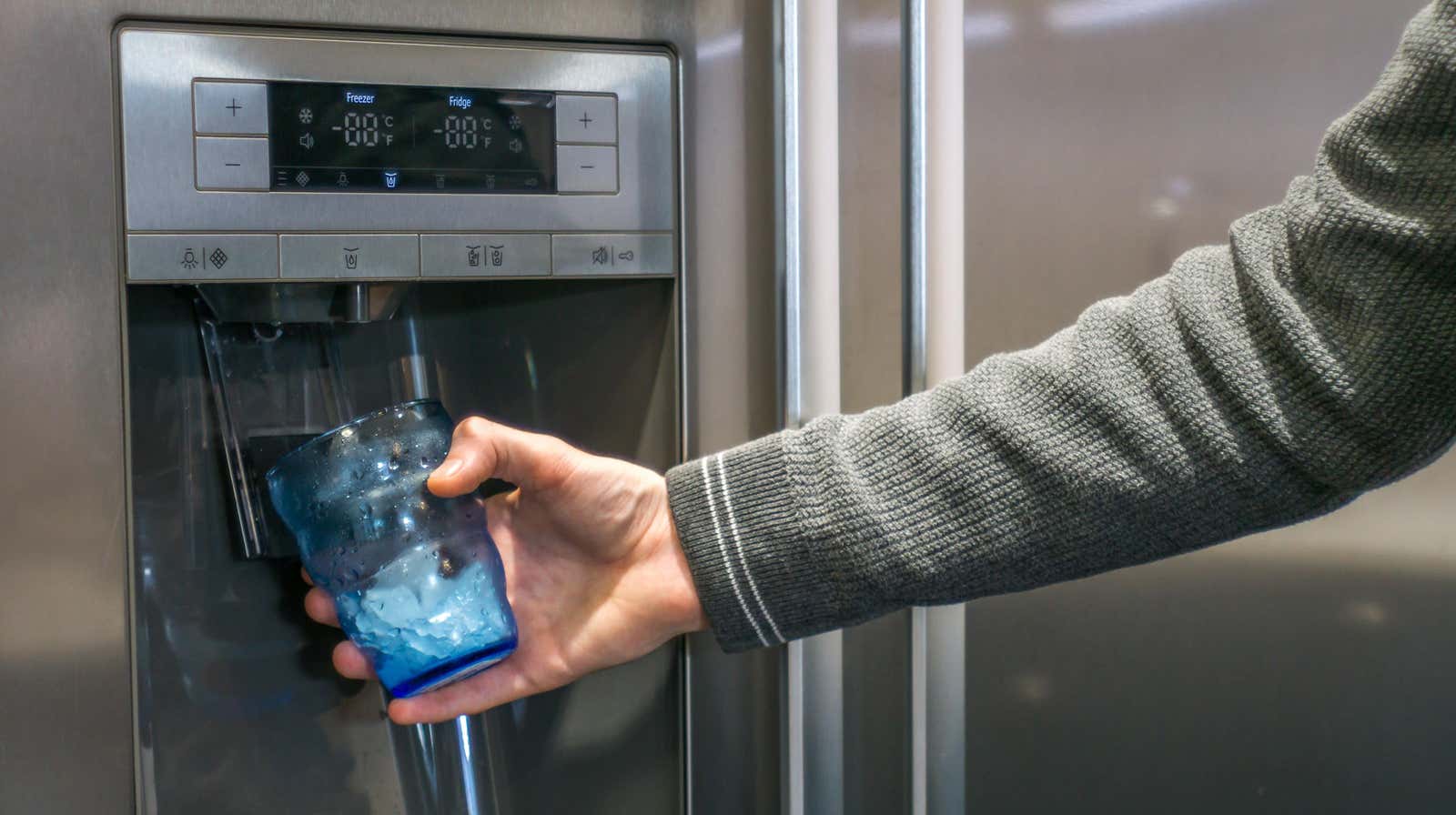Why Your Fridge Water Tastes Weird (and How to Fix It)

A fridge water dispenser is a modern convenience that many of us take for granted. It usually tastes better than from the tap and is perfectly chilled. But sometimes there can be problems in the dispenser that make the water taste bad, even if the refrigerator itself is new. Here are some possible causes and simple solutions you can try before calling a professional.
Stagnant water in the reservoir
If water stagnates in the system for several days or more, the taste may be affected. If you’ve been out of town for the weekend or just haven’t used the dispenser regularly, try pouring water into a larger container for a few minutes, then pour more into a clean glass to see if the taste has changed. enhanced.
Filter to be replaced
If that doesn’t work, the next thing to check is the filter. Most refrigerator water filters are either on the bottom, behind the refrigerator grate, or in the rear upper right corner inside the refrigerator. If the filter is worn, incorrectly installed, or leaking, it can cause water quality problems. Depending on what type of filter you have, you will either open the compartment to remove it, or slide the filter straight out and follow the manufacturer’s instructions to replace it. The most common causes of bad taste in water are mold, bacteria, or mineral buildup.
Dirty hoses and reservoir
If the filter is new and properly installed and the problem still exists, there are a few more things to try. Another cause of stale water is the hoses and reservoir inside the refrigerator, which can also be cleaned. To clean the system, first unplug the refrigerator and turn off or disconnect the water supply. The water source will be a valve, usually behind the refrigerator. Then open the reservoir, usually behind a drawer at the bottom of the refrigerator. If you have an ice maker, disconnect the wire from the ice maker with a screwdriver. Then take out the tank and empty it.
You can clean it with a four part solution of vinegar in water and then rinse the reservoir with water before replacing it. Use a funnel to run the vinegar through the water supply lines to the icemaker and also run the vinegar through the water dispenser. Make sure you have a container to collect the vinegar so you can throw it away. Then run clean water through the plumbing lines for a few minutes, then assemble the case.
Rusted water valve
At this point, you should also check the valve that controls the water supply to the refrigerator and the water lines that carry water from the valve to the refrigerator system. If they are old, rusty, or dirty, they may be to blame for bad water. You need to shut off the water supply to the house in order to replace the valve. Some houses have a ceiling inside, but if there is none, you will need to turn off the electricity in the house. You will then need a wrench , some Teflon tape , and a new valve and hose to complete the replacement. Make sure you screw on the new valve securely so it doesn’t leak.
Bad taste straight from the source
The problem could also be that your water from the source itself contains something that is not being filtered by the refrigerator system. These filters are designed for chlorine, VOCs, and other contaminants, but are not necessarily suitable for heavy metals, deposits, or other minerals. If your tap water tastes bad right from the source, you may need to install a reverse osmosis filter to improve it.
They can be installed in line with your plumbing line and are relatively easy to add. In addition to improving the taste of water, a reverse osmosis system will remove up to 99.1% of lead from drinking water, making it safer to drink. If you live in an area where lead is a concern, a reverse osmosis system is a great choice.